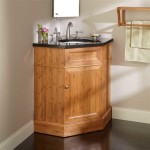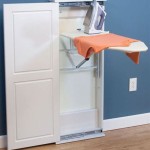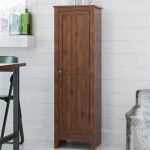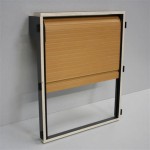How To Clean Grease And Grime From Wood Cabinets
Wood cabinets, particularly those in kitchens, are magnets for grease, grime, and food splatters. Over time, this buildup can dull the finish and make the cabinets look significantly older and dirtier than they are. Regular cleaning is essential to maintain their appearance and prolong their lifespan. This article provides a detailed guide on how to clean grease and grime from wood cabinets safely and effectively.
Before embarking on any cleaning process, it's crucial to determine the type of finish on the cabinets. Common finishes include varnish, lacquer, polyurethane, and painted surfaces. Understanding the finish is paramount because certain cleaning solutions can damage specific types. A gentle approach is always recommended, testing any cleaning solution in an inconspicuous area, such as the inside of a cabinet door or a lower corner, before applying it to the entire surface. This precautionary step helps avoid potential discoloration, damage to the finish, or other undesirable outcomes.
Another essential preliminary step is to gather the necessary cleaning supplies. These typically include: soft cloths (microfiber cloths are ideal), a soft-bristled brush (an old toothbrush works well for tight spots), warm water, mild dish soap, baking soda, white vinegar, a spray bottle, and optional items like mineral oil or wood cleaner designed for cabinet care. Having all these supplies readily available streamlines the cleaning process and ensures efficiency.
Key Preparatory Steps Before Cleaning
Before starting the actual cleaning, several preparatory steps need to be taken. These steps ensure both the safety of the cabinets and the effectiveness of the cleaning process.
First, clear the countertops and areas around the cabinets. Removing any items that could be splashed or damaged is crucial. This also provides ample space to move around and work comfortably. Cover countertops with a drop cloth or old towel to protect them from drips and spills, especially if using solutions that might stain or etch delicate surfaces like marble or granite.
Next, perform a dry cleaning of the cabinet surfaces. Use a soft cloth or brush to remove any loose dust, crumbs, or debris. This step is essential because attempting to clean a dusty surface with a wet cloth simply turns the dust into mud, making the cleaning process less effective and potentially damaging the finish. Pay particular attention to corners, edges, and decorative details where dust tends to accumulate.
Finally, assess the level of grime and grease buildup. Heavily soiled cabinets might require a more aggressive cleaning solution or multiple cleaning passes. Identifying problem areas beforehand helps focus efforts and ensures a more thorough cleaning.
Effective Cleaning Solutions and Techniques
Several cleaning solutions can be used to remove grease and grime from wood cabinets. The choice of solution often depends on the severity of the buildup and the type of finish on the cabinets. Always test any solution in an inconspicuous area first.
One of the safest and most effective cleaning solutions is a mixture of warm water and mild dish soap. Add a few drops of dish soap to a bowl of warm water, stirring gently to avoid creating excessive suds. Dip a soft cloth into the solution, wring it out well to prevent dripping, and gently wipe down the cabinet surfaces. Rinse the cloth frequently in clean water and continue wiping until all soap residue is removed. Dry the cabinets thoroughly with a clean, dry cloth to prevent water spots or damage to the finish.
For more stubborn grease stains, a baking soda paste can be used. Mix baking soda with a small amount of water to form a thick paste. Apply the paste to the greasy areas, let it sit for a few minutes to allow the baking soda to absorb the grease, and then gently scrub with a soft-bristled brush or cloth. Rinse thoroughly with clean water and dry with a clean cloth. Be mindful not to scrub too hard, as baking soda can be abrasive and may scratch the finish.
Another effective degreasing solution is a mixture of white vinegar and water. Combine equal parts white vinegar and warm water in a spray bottle. Spray the solution onto the cabinet surfaces, let it sit for a few minutes, and then wipe clean with a soft cloth. Vinegar is a natural degreaser and disinfectant, but it can also be acidic, so it's important to use it sparingly and test it in an inconspicuous area first. After cleaning with vinegar, rinse the cabinets with clean water and dry thoroughly.
For cabinets with a particularly tough buildup of grease and grime, commercial wood cleaners designed for kitchen cabinets may be necessary. These cleaners are formulated to remove grease and dirt without damaging the wood finish. Always follow the manufacturer's instructions carefully when using these products. Typically, they involve spraying the cleaner onto the cabinets, letting it sit for a specified amount of time, and then wiping it off with a clean cloth.
When cleaning, pay close attention to areas around the stove, sink, and handles, as these areas tend to accumulate the most grease and grime. Use a soft-bristled brush or an old toothbrush to scrub hard-to-reach areas, such as corners and crevices. Avoid using abrasive cleaners or scouring pads, as these can scratch or damage the wood finish.
After cleaning, consider applying a wood polish or conditioner to help protect the cabinets and restore their shine. Follow the manufacturer's instructions carefully when using these products. Wood polish can help to seal the finish and protect it from future damage, while wood conditioner can help to moisturize the wood and prevent it from drying out and cracking.
Maintaining Cleanliness and Preventing Future Buildup
Once the cabinets are clean, establishing a regular cleaning routine is essential to prevent future buildup of grease and grime. Consistent maintenance will save time and effort in the long run.
Wiping down the cabinets regularly with a damp cloth is a simple yet effective way to keep them clean. Aim to wipe down the cabinets at least once a week, or more often if they are exposed to heavy cooking activity. This helps to remove any fresh splatters or spills before they have a chance to harden and become more difficult to remove.
Using a range hood while cooking can significantly reduce the amount of grease that accumulates on the cabinets. The range hood helps to vent the grease and odors out of the kitchen, preventing them from settling on the surfaces. Ensure the range hood is cleaned regularly as well, as a dirty range hood will not function effectively.
Promptly cleaning up spills and splatters is crucial. The longer a spill sits on the cabinets, the harder it will be to remove. Keep a supply of cloths handy for quick cleanup. Address spills as soon as they occur to prevent them from staining or damaging the finish.
Consider applying a protective coating to the cabinets, such as a wax or sealant. This can help to create a barrier between the cabinets and the grease, making it easier to clean them in the future. Be sure to choose a product that is compatible with the cabinet finish and follow the manufacturer's instructions carefully.
Regular dusting is also important, as dust can combine with grease to form a sticky residue that is difficult to remove. Use a soft cloth or a feather duster to remove dust from the cabinets on a regular basis.
By following these simple tips and establishing a regular cleaning routine, it is possible to keep wood cabinets looking clean and beautiful for years to come. Consistent maintenance is the key to preventing the buildup of grease and grime and preserving the integrity of the wood finish.
In summary, cleaning grease and grime from wood cabinets requires a gentle yet effective approach. Proper preparation, the selection of appropriate cleaning solutions, and consistent maintenance are all crucial for preserving the beauty and longevity of these essential kitchen elements.

How To Clean Kitchen Cabinets Everyday Skate
How To Clean Wood Cabinets In The Kitchen Easily Quora
:max_bytes(150000):strip_icc()/ways-to-clean-wood-kitchen-cabinets-3017289-00-fb8e5ae9eb004ec6b968f9d53e74cd1e.jpg?strip=all)
Tips For Cleaning Food Grease From Wood Cabinets

How To Remove Greasy From Kitchen Cabinets Home Cleaning Tips

How To Clean Wood Cabinets And Make Them Shine

How To Clean Grimy Kitchen Cabinets With 2 Ingredients

Remove Grease And Grime Easily How To Really Clean Oak Kitchen Cabinets Cleaning Wood

How To Deep Clean Kitchen Cabinets And Keep Them Looking Gorgeous Everyday Skate
:max_bytes(150000):strip_icc()/ways-to-clean-wood-kitchen-cabinets-3017289-01-765f893e7cca49a1ab72d7c49efdf518.jpg?strip=all)
Tips For Cleaning Food Grease From Wood Cabinets

How To Remove Grease From Kitchen Cabinets 3 Methods Bob Vila
Related Posts








